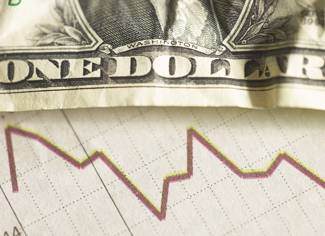If you’re an investor, you’re interested in national economic trends that influence the success of businesses because those trends also influence your investing decisions. But how do you determine where the economy is headed?

Leading economic indicators, a fundamental tool used by stock analysts, can help you gain insight into future economic trends. As statistical measures that tend to move up or down before the rest of the economy, leading indicators can help forecast the nation’s business conditions.
Fortunately, you don’t need to be a professional analyst to have a basic understanding of economic indicators and what they mean. Here are five that are worth watching:
1. Unemployment Claims – Initial claims for unemployment increase as layoffs rise and new hiring falls. Sustained increases in unemployment claims can indicate a slowing economy. The economy slows as employers decrease their labor force due to slack demand for their products.
The impact on your investment outlook: Balance what’s reported in the national news with what you observe in your own workplace. If you believe tighter times lie ahead for the job market, build your cash emergency funds.
2. Interest Rate Spread – Also called a yield curve, a spread is the difference in yields between two fixed-rate securities. Normally, investors expect a higher rate of return over the longer term. When rates for short-term securities move higher than longer-term rates, investors are less optimistic about the future of the economy.
The impact on your investment outlook: Interest rate changes affect bond prices. Existing bond prices decline during periods of higher rates and rise during periods of lower rates.
However, for long-term investors, these price changes are often offset by the return generated from reinvested interest income. Rather than reacting to fluctuations in this indicator by shifting your entire portfolio into or out of bonds, consider adjusting your overall asset allocation mix.
3. New Residential Building Permits – The construction industry is also sensitive to changes in interest rates. As rates go up, the cost of borrowing for builders and buyers increases. Thus, a decrease in the issuance of building permits suggests a cooling economy.
The impact on your investment outlook: A slow housing market means it may take longer to sell your home, and you may have to reduce your asking price. If you are planning to buy, a decline in home sales means more homes are available for sale, which generally drives prices down.
4. Consumer Confidence – This leading indicator is a measure of consumer attitudes about future economic conditions based on monthly surveys. Consumer spending is a prime economic driver. When consumers are confident, spending rises, sparking further economic growth.
The impact on your investment outlook: The economy and corporate profits ebb and flow in response to increases and decreases in spending. By investing equal amounts of money at regular intervals, you can smooth the effect of these ups and downs on your portfolio.
5. Stock Prices – Rising stock prices reflect investor confidence in the market. Indexes such as Standard and Poor’s 500 Stock Index are broad indicators of stock price movements.
The impact on your investment outlook: Swings in stock prices are always in the news. Because indexes point out the general trend of the market, investors follow them to track how stocks react to supply and demand.
But buying and selling on price alone is not sound investment strategy. Your investment decisions should be based on your long-term goals and objectives and your tolerance for risk.
Like any tool, leading economic indicators provide direction, not decisions. And, like any prediction of the future, they sometimes miss the mark. However, when tracked over time, they are valuable statistics that provide investors with a peek into tomorrow.



